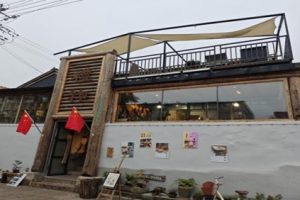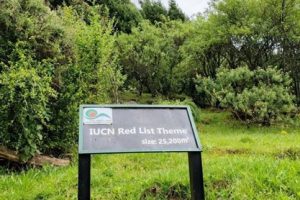
The history of human beings is highly associated with the use of forests and forest products. Ever since the creation of human beings, man has been managing forest resources for various purposes. Still today, there is increased recognition of the role of forest products across the world.
Forests and forest products play an indispensable role in offering important community needs for improved rural livelihood, contribute to household food security and nutrition, help to generate additional employment and income, provide opportunities for forest-based enterprises, contribute to foreign exchange earnings, and support biodiversity and other conservation objectives which is true for many Ethiopians.
Ethiopia has great ethnic and linguistic diversity and styles. These styles have been expressed in various ways including forests and forest products. Traditional wood crafts have been produced vary greatly in different parts of the nation. The products have many uses, such as storing grains, seeds, and food and being used as tables and bowls. Besides, the products have been used for furnishing the house.
Hence, forest-based product activity constitutes part of traditional agricultural practices. For many Ethiopians, the money earned from collecting, selling, or processing forest products provides an indispensable contribution to household income. Income from forests and forest products enables rural households to purchase consumable goods and pay for basic expenses.
The benefits of forests are possible means to improve rural livelihoods and conserve biodiversity in many forested areas of the world. Many young people in the developing world may be more dependent on forest products since the young may have multiple uses for the forests and feet for the labor-intensive work of the forest than elderly people.
Accordingly, the connection between the forest and the local communities is huge in developing countries like Ethiopia. People in developing countries have been greatly dependent on forests to meet their daily needs. Hence, from the evidence in Ethiopia, the forest-dependent community was too much and must have their own power on conservation of forest resources to meet their daily needs.
Martha Akayjulu, a girl from Gambella Cultural Group told The Ethiopian Herald that the nature of Gambella people’s livelihood is largely dependent on the forest extracts. In the region, there are various types of forest products that are used for the construction of houses. The products are also used for utilities and marketing purposes. There are many types of wood products that are also used for musical instruments. Therefore, forests and forest products, and community life are highly intertwined in Gambella.
Fitsum Ayalew from the Oromia Cultural Group told The Ethiopian Herald that in Oromia, forest products are used to serve food, milk and butter containers, home furnishings, jewelry, and so on. Therefore, forest products and communities are inseparable.
Studies have indicated that the level of use and degree of support of forests to the local livelihood and their importance as a source of survival were varied geographically or across the communities. This is because forest resource is used to meet their daily needs and have a significant role over other income for the area.
Hawa Ali from Afar Cultural Group said that the people of Afar build a variety of traditional household items, gifts for the bride, a water cooler, baskets, and so on from forest products. Hence, forest and forest products are used not only for food but also as a cultural complement.
Bekal Ishmael from Harar Cultural Group in her part told The Ethiopian Herald that the people of Harar are known for their traditional wood products. For example, various traditional forest products have been used for gifts and religious services.
These traditional expressions of each people have shown how Ethiopian people have great ethnic and linguistic diversity. Since every people of Ethiopians have their own traditions that are expressed via forest products, it is imperative to work on forest conservation and preservation activities. For this, there are favorable conditions in the country like the green legacy initiative.
According to Ethiopian Prime Minister Abiy Ahmed, green legacy preparations are currently underway as the country gears up for the fourth year. Commendable preparations are being undertaken before the rainy season begins to capture rainwater for this year’s green legacy program as well as to protect soil from erosion.
Soil and water combination is essential to enhance agricultural productivity. Therefore, it is vital to pay attention to water and soil management practices as a nation. With increasing pressures on water supplies and topsoil erosion, due to various factors including land degradation. So, the green legacy efforts aim to address a number of these intertwined issues to ensure agricultural productivity and food security.
Forest conservation and preservation activities are indeed imperative not only to enhance agricultural productivity but also the forest coverage of the country. This in return would help to preserve the nation’s tradition through forests and forest products.
As stated by Martha, the preservation of culture and forestry need to be combined. If forestry produces a variety of wood products, it is important to do more forestry activities. Besides, it is important also to modernize wood products since it will not only preserve the culture but also save foreign exchange. They also make a profit by being a tourist attraction. So, efforts need to be made to develop and conserve the forest.
Ethiopian Biodiversity Institute Botanist (forest) Researcher Sinai Alemu said that Ethiopians have been using forests and forest products for research, medicine, food, beautification, and so on.
Accordingly, along with planting tree seedlings, it is imperative to work on tree replacement tasks. Because the rural people are the principal beneficiaries of forests and forest products, their life is highly intertwined with trees. There are many benefits to replacing trees with deciduous trees. They are used to protect soil erosion, to keep the environment, atmosphere, and the surroundings as well as to provide the expected benefits to the community and the environment, he added.
Since the forests and forest products, and community life are highly intertwined, it is imperative to understand the people’s cultural and traditional artifacts to sustainable forest management. Apart from producing wood artifacts, efforts need to be made to replace trees with deciduous trees. This is the best way to preserve both the forest resources and the production of artifacts.
By EPHREM ANDARGACHEW
The Ethiopian Herald 15 May 2022





